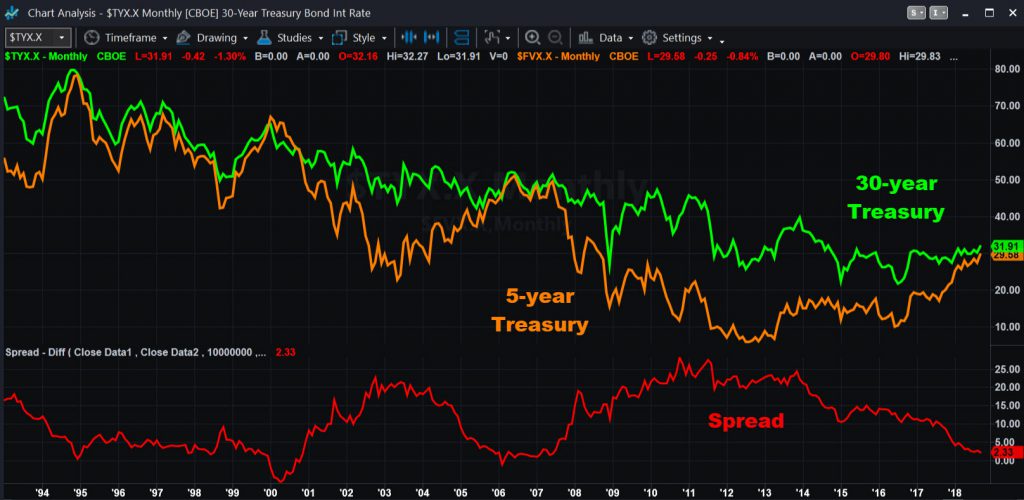There was a day when higher interest rates lifted financials. But not anymore.
Selling in the sector has been intense, with 64 of the 67 members of the SPDR Financial ETF (XLF) down so far this week. Banks, insurers and asset managers have all taken a beating. (Don’t worry, this story has a happy ending.)
It wasn’t supposed to happen this way. The Federal Reserve raised interest rates by 25 basis points yesterday, as expected. But Jerome Powell threw traders a curve ball by seeing few signs of inflation — good news for the country but not terrific for the banks.
Because they borrow at short-term rates and lend at longer-term rates, a tightening difference between the two hurts their profit. This is also called a “flattening yield” curve.

The problem with low inflation is that it boosts demand for long-term bonds, which pushes down their yields. Meanwhile, Fed moves lift short-term rates. Throw in Powell’s view of inflation and the flattening-yield curve may continue into the foreseeable future: not a great environment for the banks.
Putting all the pieces together, questions emerge. What if the recent gains we saw in lower-multiple value stocks was a head-fake? Just last week, it looked like banks and financials would rally after the Fed. But now the XLF is back below its 200-day moving average. A false breakout?
Things may get worse for the banks because the Fed raised its economic growth forecast, so rate increases (or at least no cutting) will be the norm for years. Investors may start to realize that banks face headwinds as far as the eye can see. Suddenly those low P/E ratios make sense…
And now the happy ending: Higher-multiple growth stocks remain the leaders. Software, the best major group this year, rose 2 percent in the last week. Biotechnology, another growth area that’s gotten less attention, is quietly coming to life as well. Remember, healthcare and pharma have been hot since last earnings season. That strength may be spreading.
In conclusion, news that was supposed to lift financials drove them lower. Meanwhile, longer-term strength in growth stocks may be reasserting itself. The Nasdaq bulls might have lost semiconductors but now they have biotechs. The more things change, the more they stay the same?


























